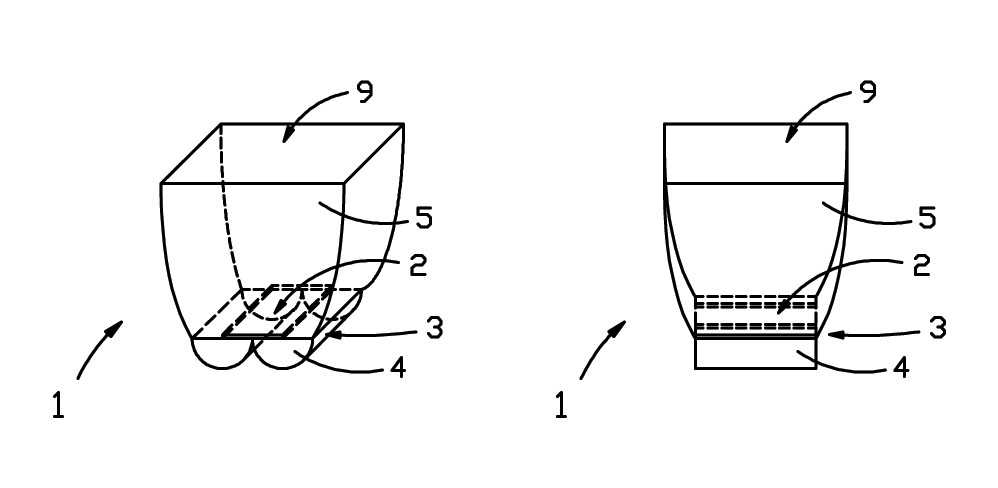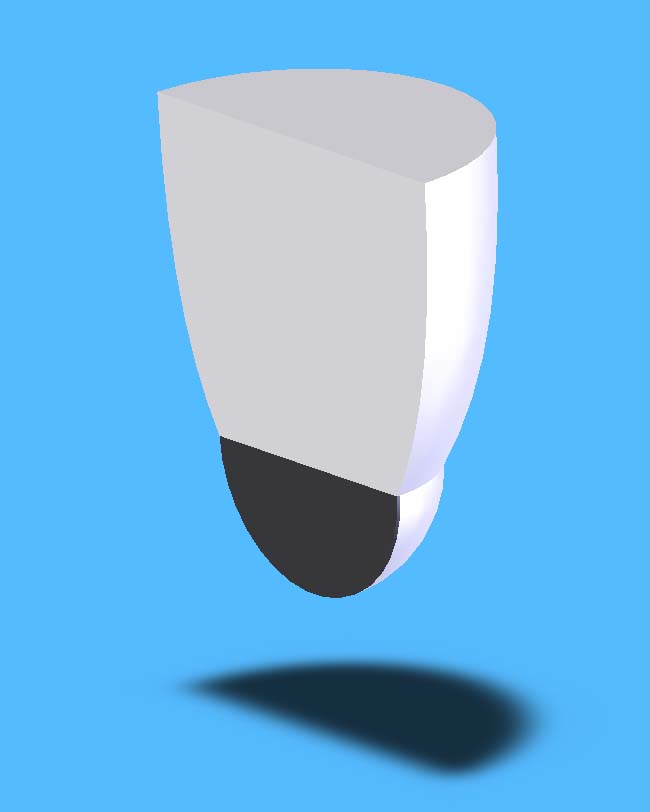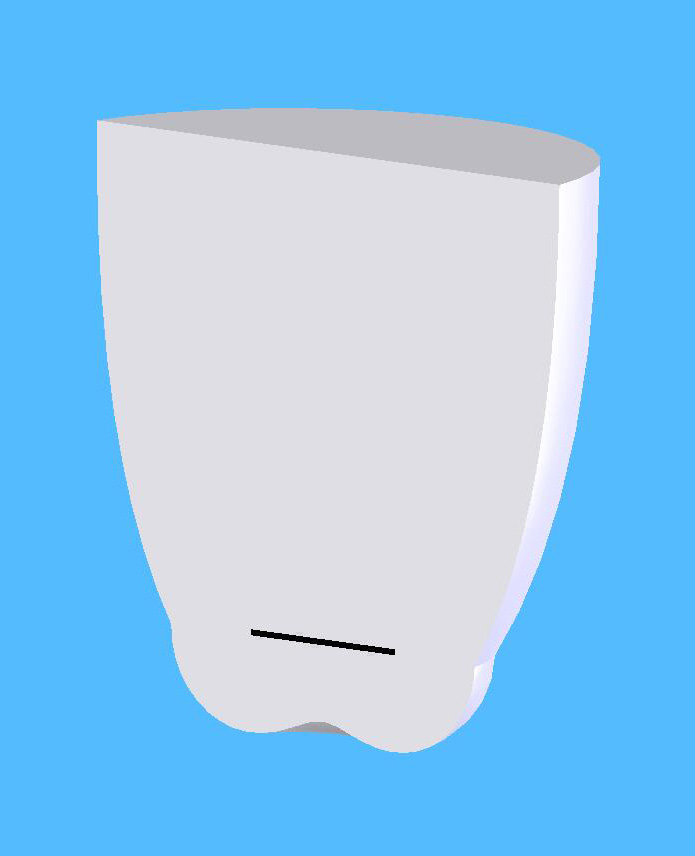
Disclosed are new types of concentrators. Some of these concentrators can concentrate radiant energy, such as solar energy from a full hemispheric view of the sky to a PV cell that is one quarter of the size of a traditional PV cell. The advantage is to reduce the cost of the most expensive part of a solar PV panel.
The figures below represent only one embodiment. More embodiments and details are given in the links below. The figures below represent a front view left, and side view right of a radiant concentrator. The upper section of the concentrator comprises a compound parabolic concentrator (CPC). Unlike common CPCs, it is filled with a transparent material that refracts radiation, such as light, from a full hemispherical view entering to a a smaller range of angles within. This allows all radiation to reach the "waist", which is where the lower concentrator begins. The lower concentrator does not increase flux, but it uses reflection to illuminate two sides of the receiver. This enables the use of a receiver that is half the size that a common CPC would use, which enables the design to have a receiver that is one quarter the size the receiver would be without the concentrator. This novel design can result in less expensive solar panels, as it saves costs of the most expensive materials, which are the PV cell and contacts. These embodiments can also be used in other applications, such as solar thermal.

Fig. 2 illustrates a cross-section of a revolved embodiment to give a general idea of what these concentrators look like. Fig. 3 illustrates a cross-section of another revolved embodiment.
Fig. 2 Fig. 3
Fig. 3
US Provisional Utility Patent Application US 63036408 has been filed - as of June 8, 2020. I am sharing this publicly now.
This disclosure represents a new method for low concentration solar collectors. The following links open PDF files for the US Utility Patent Application:
Drawings:
Prior Art
Prior art references generally have disclosed using concentrating parabolic collectors. However, these do not concentrate much diffuse radiant energy. Further, they do not make use of both sides of the receiver to save receiver material. Also, they rely exclusively on reflections to operate. The present application includes embodiments and methods that overcome these deficiencies. The present embodiments use refraction and reflection to reduce reflection losses.
Future Development
Many suggestions are contained within the present patent disclosure, and there may be many obvious alternative embodiments. CIP's (Continuation in Part) applications filled with the present inventor listed as a co-inventor are entitled to have the benefit of the present application to overcome obviousness objections. Thus, please contact temple89450 [at] hotmail.com if you would like to work together to push this new method forward.